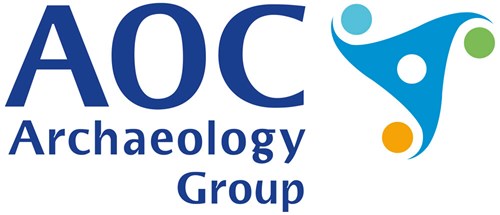
ARCHAEOLOGICAL GEOPHYSICAL SURVEY REPORT
Added on 16 April 2023
AOC ARCHAEOLOGY GROUP was commissioned to undertake a Ground Penetrating Radar (GPR) survey, which is more effective over small areas and probably the best chance of identifying any buried structures or other features. The team visited Castle Cluggy and we are pleased to share the results. Given some of the subtleties and complexities of the data, we will be discussing the results with the Project Manager (Geophysics) and deciding the next steps.
SUMMARY: In assessing the results of the geophysical survey against the specific aims:
• The survey has succeeded in locating, recording, and characterising surviving sub-surface remains within the site, though more remains may be present that are being masked by response form former rhododendrons;
• The survey will help in determining the next stage of works as it has provided evidence that remains of an uncertain origin are most likely present on site, and has provided several targets for further investigation;
• The survey has resulted in a comprehensive report and archive.
CONCLUSION: An area of approximately 20m by 39m around the castle could be surveyed. Much of this area had been cleared of rhododendrons, but with some root systems still in place. This has generated a level of noise within the data due to the associated natural subsurface and surface disturbance caused by the previous and existing root systems. Survey was not possible within the tower structure due to lack of physical access.
At depths of 0.38m to 0.75m a well-defined rectangular anomaly has been detected. The location and nature of this response suggests it could indicate an eastward extension of the northern wall. However, interpretation is cautious as records show that previous excavations were undertaken in this area and some of the response may be due to the previous trench.
Within the overlapping 0.50m – 0.75m to 1.13m depth slices, weak trends have been noted which may be associated with the robber trenches revealed during excavation which were thought to indicate the original eastern extent of the Castle. However, such an interpretation is tentative given their ephemeral nature.
A well-defined anomaly with a rectilinear form is apparent at a depth of 0.75m. The relationship of this response to the extant Castle could suggest that the survey has detected the original northeast corner of the Castle. However, if this is the case that would suggest the Castle used to measure approximately 13m east-west, rather than the 9.3m suggested by past excavation. In addition, while no roots are visible on the surface in the immediate are of the anomaly, remnants of roots are evident just to the south and east and as such a natural origin for this anomaly cannot be ruled out.
 Home
Home